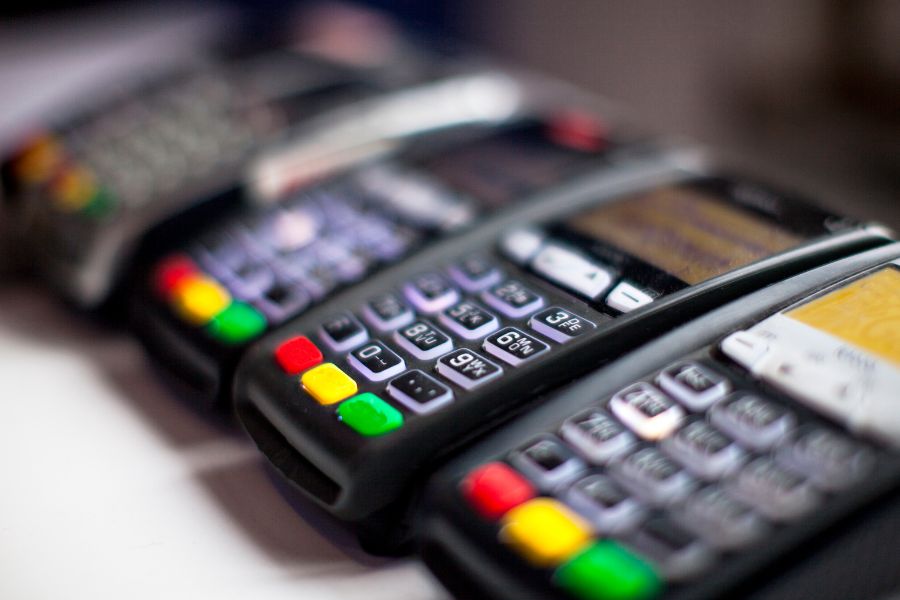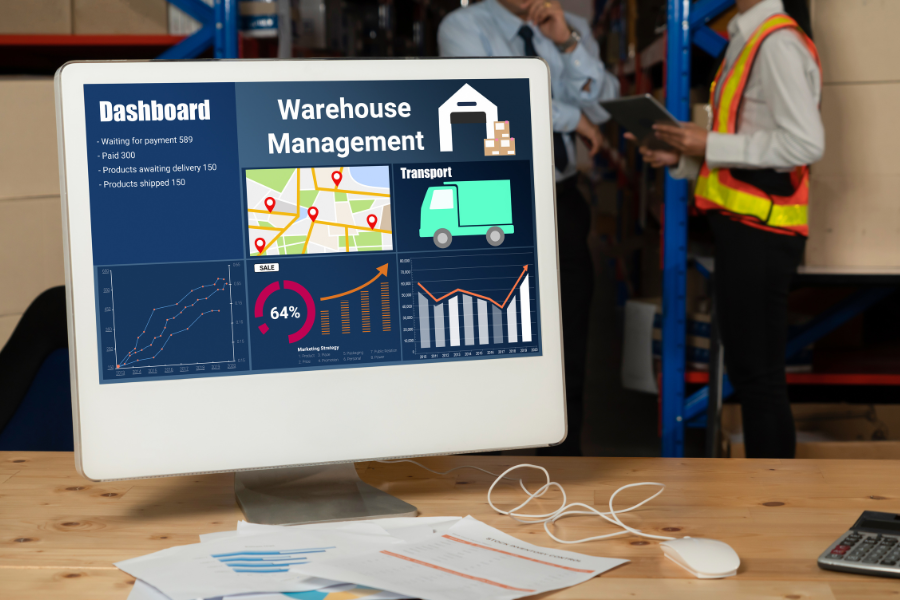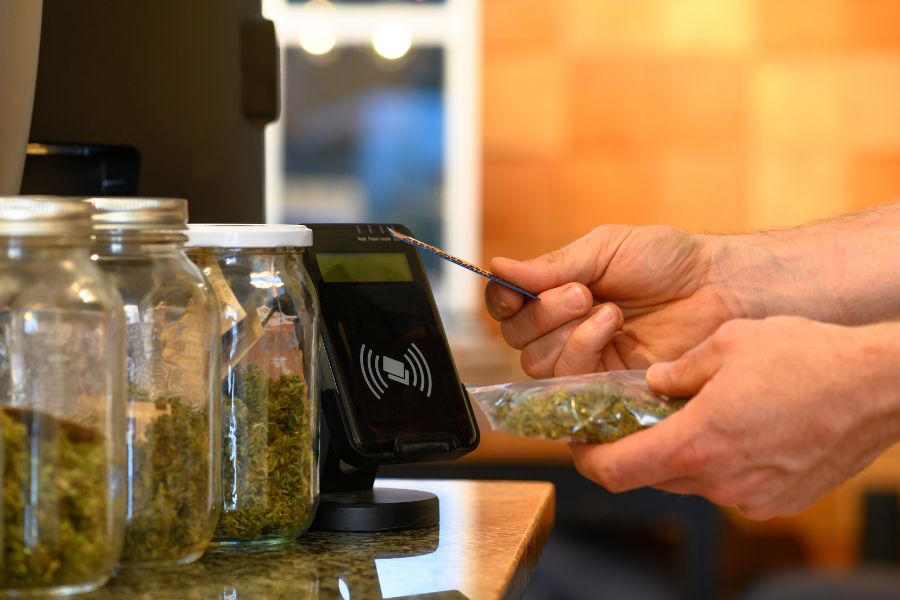Omnichannel retail has been praised as an approach to increase sales and improve customer satisfaction across various channels. But what about high-pressure events like Black Friday, where competition is fierce and customer expectations are sky-high? To succeed, retailers need to implement effective omnichannel retail strategies for Black Friday. In this article, we’ll explore how these strategies can elevate the shopping experience, boost sales, and help your brand stand out during the busiest shopping weekend of the year.
Highlights
- Omnichannel retail provides a seamless, cohesive shopping journey by connecting online, mobile, and in-store experiences, ultimately enhancing customer satisfaction.
- Implementing omnichannel strategies during Black Friday leads to increased engagement, higher sales, and improved customer loyalty by offering flexibility and convenience across all shopping channels.
Black Friday and Cyber Monday: A Statistical Overview
Black Friday and Cyber Monday have solidified their positions as two of the most significant shopping events of the year, both in-store and online.
- $70.9 billion in global online sales on Black Friday, reflecting an 8% YoY growth (Salesforce).
- $16.4 billion in U.S. online sales on Black Friday, marking a 9% YoY increase (Salesforce).
- 76.2 million shoppers visited brick-and-mortar stores on Black Friday, up 4.5% from 2022 (NRF).
- 79% of Cyber Week ecommerce traffic came from mobile phones (Salesforce).
- 5% YoY increase in total U.S. retail sales on Black Friday (Mastercard).
- A record 200.4 million consumers shopped during Cyber Week, surpassing the previous record by 1.9% (NRF).
So, what do all these statistics tell us about the impact of Black Friday and Cyber Monday?
The data underscores the ongoing importance of Black Friday and Cyber Monday as crucial sales drivers, with both online and in-store channels playing significant roles.
The steady growth in online sales, particularly the 9% increase in the U.S. points to the growing need for robust e-commerce strategies, especially as more consumers opt to shop from the comfort of their homes.
The fact that 79% of Cyber Week e-commerce traffic came from mobile phones highlights the increasing importance of mobile optimization for retailers. A seamless mobile shopping experience is now a primary channel for consumer engagement and revenue generation.
While in-store shopping remains strong, with 76.2 million shoppers hitting physical stores on Black Friday, the modest 1.1% increase in in-store traffic compared to the 8.5% rise in e-commerce suggests a shift in consumer behavior.
The record 200.4 million consumers shopping during Cyber Week, combined with the 5% growth in U.S. retail sales on Black Friday, further illustrates the expanding market opportunity.
Retailers must focus on integrating their online and offline experiences to meet customer expectations, particularly during peak shopping periods.
Understanding Omnichannel Retail Approach
Omnichannel Retail Definition
Omnichannel retail may sometimes be mistaken for multiple sales channels, but it extends far beyond that. The omnichannel approach integrates these channels to create a seamless, unified shopping experience.
In a traditional multichannel setup, customers might interact with a brand through its website, physical store, or social media, but each channel typically operates in isolation. Omnichannel retail, in contrast, connects all these touchpoints, allowing customers to move effortlessly between them.
For example, a person might start browsing on a mobile app, switch to a desktop to compare products, and then complete the purchase in a physical store. Regardless of the platform, they can enjoy a consistent experience.
Omnichannel retail places the customer at the center, giving them the flexibility to shop on their own terms, without encountering barriers.
Why Omnichannel is Essential in Modern Retail
Consumer expectations have evolved. Shoppers no longer view online and offline channels as separate entities; they expect a smooth transition between them. We are sure retailers like you are already aware of this.
As shoppers increasingly use multiple channels to make purchasing decisions, the ability to offer a cohesive experience across all platforms becomes crucial to remaining competitive.
Consider a scenario where a customer wants to check product availability online before heading to a store, or perhaps prefers to return an online purchase in person. Omnichannel retail addresses these needs by delivering a unified and personalized experience across all touchpoints.
In other words, if you do it right with omnichannel strategies, your business is better positioned to build loyalty and drive long-term growth. This is backed by a study that reports companies with robust omnichannel strategies achieve an average customer retention rate of 89%
Crucial Elements of a Positive Customer Experience
Providing a positive customer experience sounds great, but you must know what such a concept is composed of before you can deliver the right one to people.
- Consistency Across Channels
Consistency across all channels is your approach to building customer trust and satisfaction. It’s important that customers encounter the same level of service, product information, and pricing, regardless of how they choose to interact with the brand. For instance, a promotion available online should also be honored in-store, and inventory availability should be reflected accurately across all platforms.
Any discrepancies between channels can lead to customer frustration and undermine the brand’s credibility. Therefore, a consistent experience across channels helps cultivate a sense of reliability and confidence in the brand.
- Personalization
Tailoring experiences to individual preferences greatly improves how customers perceive your store. Omnichannel retail allows brands to gather and leverage data from various touchpoints, such as browsing history, purchase patterns, and customer preferences, to create more personalized interactions.
For example, personalized product recommendations or targeted promotions can make customers feel understood and valued. This tailored approach not only improves the shopping journey but also builds stronger connections with customers, encouraging repeat business and fostering brand loyalty.
- Convenience
Customers today expect a seamless, hassle-free shopping experience, making convenience a top priority. Shoppers expect to engage with brands in the way that best suits their needs, whether that involves shopping via mobile, picking up an order curbside, or returning a product at a physical store.
Omnichannel retail empowers retailers to offer various fulfillment options and streamline the buying process, reducing friction at every stage. The greater the convenience provided to customers, the more likely they are to return, increasing their loyalty and lifetime value to the brand.
How Omnichannel Retail Strategies Elevate the Black Friday Experience
Strategic omnichannel approaches during Black Friday can transform how customers engage with your brand, making the whole shopping journey smoother and more enjoyable.
1. Blending Online and In-Store Shopping
Omnichannel strategies allow customers to start shopping on one platform and finish on another, creating a more flexible experience. For instance, many Black Friday shoppers may browse deals online and then opt for Buy Online, Pick Up In-Store (BOPIS). This option reduces the stress and time spent in crowded stores.
2. Unified Promotions Across All Channels
One of the key benefits of omnichannel is the consistency it brings across different shopping platforms. Customers can shop through your website, mobile app, or visit your physical store, they’ll still encounter the same promotions and offers. This consistency builds trust, reduces confusion, and keeps customers engaged, regardless of platform.
3. Real-Time Inventory Updates
Shoppers can be frustrated by products selling out quickly during Black Friday. With omnichannel, they can access real-time stock updates across all purchasing platforms. If an item isn’t available online, they can quickly check the nearest store for availability. This transparency helps avoid disappointment and makes it easier for customers to locate what they want.
4. Accessible Customer Support Across Platforms
During the hustle of Black Friday, customers would need quick answers about deals, shipping options, or stock availability. Omnichannel strategies let customers get help across multiple platforms, from live chat on your website to in-store assistance. Providing a range of support options keeps the shopping experience smooth, no matter how customers choose to reach out.
5. Personalized Offers Based on Shopping Behavior
With omnichannel strategies, retailers can collect data from online and in-store purchases to offer more personalized deals. If a customer frequently shops for electronics during Black Friday, they could receive special offers on those items based on their past behavior. Tailoring offers in this way makes the experience more relevant for each customer and encourages repeat visits.
Brands Leading the Way with Omnichannel Success on Black Friday
Leading brands like Target, Walmart, and Amazon have mastered omnichannel strategies to deliver seamless and exciting shopping experiences during Black Friday.
Target
Target has consistently elevated the Black Friday experience by offering a variety of omnichannel options that cater to the modern shopper.
Ahead of BFCM 2023, Target launched deep discounts across multiple categories, including tech, toys, and apparel, both online and in stores. Their Buy Online, Pick Up In-Store (BOPIS) and Drive Up services gave customers the flexibility to shop online and retrieve their purchases in person, avoiding the holiday rush.
They even went one step further with same-day delivery through Shipt, shoppers can get their Black Friday deals delivered directly to their door, sometimes within an hour.
Macy’s
Walmart takes an omnichannel approach by offering competitive deals both in-store and online, ensuring that shoppers can access their Black Friday discounts wherever they prefer.
Their strategy begins early with the release of Black Friday ads, building excitement and driving traffic to both physical and digital stores. Walmart’s pickup and delivery options—including curbside pickup and home delivery—provide flexibility, allowing customers to choose how and when they receive their purchases.
This blend of in-store and online options ensures that Walmart meets the needs of a wide variety of shoppers, from those who enjoy the traditional in-store experience to those who prefer the convenience of home delivery.
Amazon
When discussing omnichannel retail strategies, we can’t miss out on Amazon.
The company has perfected the art of omnichannel retail, especially during Black Friday. Their early access deals for Prime members create a sense of exclusivity, encouraging early purchases and driving traffic well before the actual Black Friday event.
Moreover, Lightning Deals – time-sensitive discounts – boost urgency and keep shoppers engaged throughout the day. Amazon also integrates technology into the shopping experience with voice shopping via Amazon Echo devices, allowing customers to place orders using simple voice commands. This unique option makes shopping even more convenient, showcasing how Amazon leverages digital and voice platforms to create a truly omnichannel experience.
Top Omnichannel Retail Strategies for Black Friday 2024
With these omnichannel strategies, you’ll turn Black Friday chaos into a smooth, rewarding experience that your customers will love.
Personalized Marketing with Data Insights
Approach
Personalized marketing is all about using customer data to create relevant, timely offers that resonate with your audience. Instead of bombarding shoppers with generic promotions, you can focus on what they actually want, making the experience more meaningful.
Best Practice
Segment your audience based on their past behaviors and preferences. This way, you can send personalized Black Friday deals that speak to their interests. For instance, if a customer frequently buys tech products, send them exclusive offers on electronics. Personalized offers keep your customers engaged and increase their chances of purchasing during the big day.
Unified Inventory Management: Keeping Stock in Sync
Approach
Keeping stock levels synced across all channels will give everyone – including you and your customers a clear view of product availability. This guarantees that customers know what products are available no matter how they choose to shop.
Best Practice
Implement a centralized inventory system that gives both you and your customers a clear view of what’s available, whether online or in-store. A modern POS system like ConnectPOS can help track sales and update stock in real-time, ensuring that inventory information is always accurate. During Black Friday, transparent stock levels help shoppers find what they need, while your team can avoid overselling or confusion about product availability.
Click-and-Collect: Blending Online and Offline Experiences
Approach
Click-and-collect, or Buy Online, Pick Up In-Store (BOPIS), gives you the opportunity to bridge online convenience with in-store immediacy. Customers love the flexibility of shopping from the comfort of their home and picking up their purchases without waiting for delivery.
Best Practice
Make the process as smooth as possible by offering easy-to-follow instructions and fast turnaround times. Setting up dedicated pickup spots in-store or curbside will help handle the Black Friday rush while giving customers a frictionless experience. You can even use this moment to upsell or cross-sell items when they arrive for pickup.
Integrating Mobile Commerce into Your Strategy
Approach
With more and more customers shopping on their phones, mobile commerce is a must-have part of your omnichannel approach. Your mobile platform should offer the same convenience and speed that customers expect from desktop shopping, especially during high-traffic events like Black Friday.
Best Practice
Focus on making your mobile site or app fast, responsive, and easy to navigate. A smooth checkout process is key—consider integrating one-click payment options. Push notifications can also drive engagement by reminding customers about limited-time Black Friday deals or alerting them when items in their cart are running low.
Promotions and Loyalty Programs Across Channels
Approach
Offering consistent promotions and loyalty rewards across all your platforms creates a unified experience that keeps customers coming back. Shoppers don’t want to feel like they’re missing out if they choose one channel over another.
Best Practice
Sync your Black Friday deals across your website, mobile app, and physical stores so customers get the same offers no matter where they shop. Use your loyalty program to drive engagement—reward members with early access to Black Friday deals or give bonus points for purchases during the event. Promote these perks across all channels to build excitement and increase participation.
ConnectPOS can help retailers reach a level of success similar to major brands like Macy’s or Target by supporting comprehensive omnichannel strategies.
With real-time data, customers can easily check product availability, improving their shopping experience. It also supports flexible fulfillment options like click-and-collect, so shoppers can make purchases online and pick them up in-store. Integrated loyalty programs and promotions help keep rewards consistent across every platform, encouraging customer engagement. ConnectPOS makes it easier for retailers to create a cohesive and efficient shopping journey, especially during high-traffic events like Black Friday.
FAQs: Omnichannel Retail Strategies for Black Friday
1. What makes omnichannel strategies so important for Black Friday?
Omnichannel strategies allow retailers to connect online and in-store experiences seamlessly, giving customers multiple ways to engage with your brand. This flexibility is critical during Black Friday when shoppers expect convenience, real-time inventory updates, and unified promotions across all platforms.
2. How can real-time inventory management improve the Black Friday shopping experience?
Real-time inventory management keeps stock levels synced across all channels, so customers always know what’s available, whether they’re shopping online or in-store. This transparency reduces frustration during Black Friday, helping retailers avoid overselling and ensuring shoppers can easily find the products they need.
3. Why should retailers focus on integrating mobile commerce for Black Friday?
Mobile commerce plays a key role in Black Friday shopping as more customers prefer browsing and purchasing through their smartphones. By offering an optimized mobile experience with fast browsing, easy checkout, and mobile-exclusive deals, retailers can capture more sales and provide a frictionless shopping experience.
4. How do loyalty programs and promotions improve the omnichannel experience?
Loyalty programs and consistent promotions across all channels encourage repeat purchases and keep customers engaged. During Black Friday, retailers can drive excitement by offering exclusive rewards, early access to deals, or bonus points, giving shoppers more reasons to choose their brand over others.
Takeaways
To make omnichannel retail strategies for Black Friday truly effective, careful planning and execution are key. Retailers need to focus on maintaining real-time inventory visibility, ensuring seamless integration between digital and physical channels, and providing flexible fulfillment options like click-and-collect or curbside pickup. Consistent promotions across all platforms also play a crucial role in keeping customers engaged.
As Black Friday draws near, focusing on an omnichannel approach will drive both immediate sales and long-term growth.
ConnectPOS is a all-in-one point of sale solution tailored to meet your eCommerce POS needs, streamline business operations, boost sales, and enhance customer experience in diverse industries. We offer custom POS with features, pricing, and plans to suit your unique business requirements.




